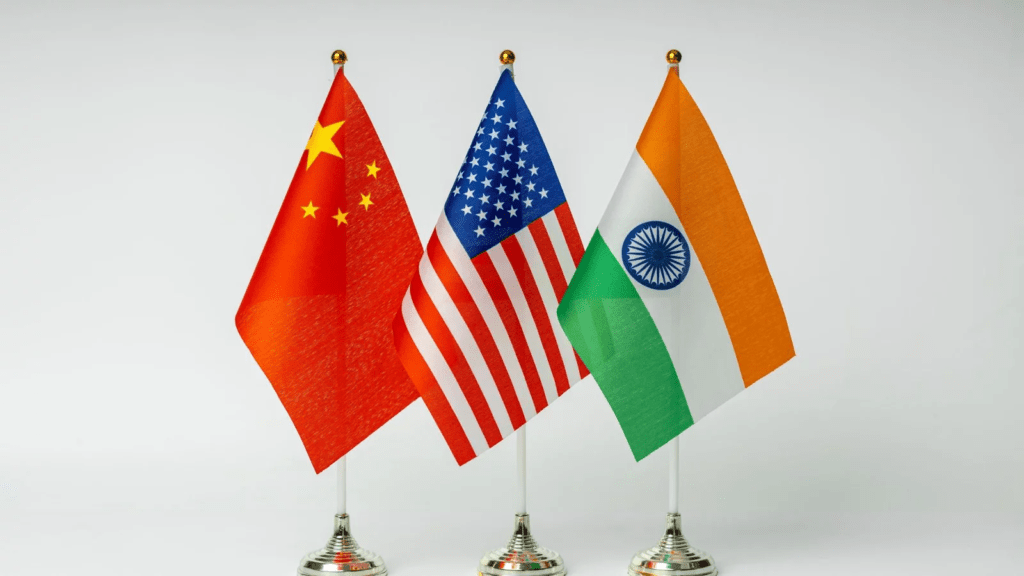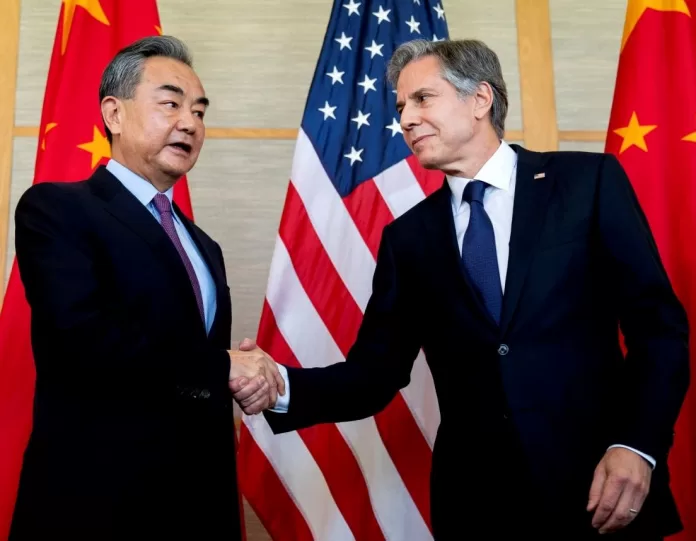As U.S. Secretary of State Antony Blinken’s plane touched down on Chinese soil, it was apparent that the welcome – or lack thereof – was symbolic of the frosty state of relations between the two superpowers. With no red carpets, no traditional greetings, and notably, no high-level Communist Party of China (CPC) officials present at the airport to welcome him, Blinken’s unceremonious arrival painted a stark picture of the delicate tightrope the U.S. must walk in its dealings with China.
In this precarious environment, the U.S. should reflect on its position and seek avenues for cooperation with China. It must recognize the new realities of the global order, where the ability to adapt and foster partnerships will be vital. As part of this process, Blinken’s engagements should focus on constructing dialogues that not only address contentious issues but also identify common goals. Creating channels for cooperation in areas like climate change, global health, and technological innovation can serve as the building blocks for a more stable and constructive U.S.-China relationship. It is imperative that while walking this tightrope, the U.S. maneuvers with tact and farsightedness, understanding that in a rapidly changing world, diplomacy and collaboration are integral to shaping a future that is beneficial for both nations and the global community.
China: An Existential Threat or a Systematic Rival?
One of the central questions surrounding the U.S.-China dynamics is whether China poses an existential threat to American hegemony or is merely a systematic rival. It is clear that China’s economic growth, technological advancements, and increasing global influence challenge the United States’ dominance. However, instead of a conventional threat, China represents a clash of systems. While the U.S. has historically promoted a liberal world order based on democracy and human rights, China’s model of governance diverges significantly.
Grand Strategy of China
China’s expansionist ambitions are often dubbed as its grand strategy. Through initiatives like the Belt and Road, it aims to establish global connectivity and partnerships. Interestingly, China pursues its expansion without fully opening its market. The country has mastered the art of selectively engaging with global economies on its terms, which often means restricted access for foreign companies.
In the ever-evolving game of global chess, China’s grand strategy is akin to a carefully calculated gambit. As it weaves a web of connectivity with the Belt and Road Initiative, it is crafting a new narrative of power and influence. The genius in its approach lies in maintaining a fortressed market while laying out the red carpet for its global outreach. For other nations and multinational companies yearning to tap into the vast Chinese market, this is both tantalizing and daunting. As China strides ahead with its selective engagement, the world must either adapt or find a way to dance to the tunes of this economic maestro or risk being mere spectators in a play where China takes the lead role. The keys to the Chinese market are closely guarded, but in them lies a conundrum that defines the geopolitics of the 21st century.
The Dragon Awakens: China’s Meteoric Rise Shakes the Foundations of American Dominance
The ascendancy of China is rattling the US as China vigorously contests regional dominance, launching its own Cross-Border Interbank Payment System (CIPS) as a counterweight to SWIFT.
Through its Belt and Road Initiative, China is penetrating the heart of Europe, aggressively expanding its influence in Africa, the Middle East, and the Americas, and constructing an institutional framework rivaling the IMF and World Bank through instruments like the AIIB Bank.
This multi-pronged strategy illustrates China’s commitment to reshaping the global landscape. By doing all this, China poses serious threats to the US, and it’s clear that this is a nightmare for the US. The audacity and scale of China’s maneuvers signify a tectonic shift, potentially disrupting the longstanding US dominance and ushering in an era where the balance of global power is perennially contested.

America’s Soft Power and the Policy of the Century
The United States has historically relied on its soft power, which includes promoting democracy, human rights, and cultural influence, as a means of asserting its leadership. Now, in the face of China’s rise, it is imperative that the U.S. refines these tools to maintain relevance.
However, the United States must establish long-term goals akin to the China’s approach. The Chinese government sets short, achievable targets that contribute to its broader ambitions. In contrast, the U.S. should consider establishing a policy of the century – a long-term vision that encompasses various aspects including economic, military, and technological advancement.
Balance of Power: A Concern for the United States
Traditionally, the U.S. has relied heavily on military power and weaponry. In contrast, China focuses on technological advancements and economic growth. For the U.S., it is crucial to recognize that the balance of power is not merely a military issue but involves economic, technological, and diplomatic dimensions. Therefore, a multi-faceted approach is needed to ensure the United States’ continued relevance on the global stage.
The India Factor
As the world’s fourth-largest economy, India plays a significant role in the balance of power in Asia. Historically, India has maintained a non-aligned movement (NAM) posture and centered its policies on its national interests. Though considered a U.S. strategic ally, India continues to trade with both Russia and China.
In a scenario where tensions escalate between the U.S. and China, India’s position becomes crucial. It is unlikely that India would firmly take sides, given its historical non-alignment and the importance of its trade relationships with both countries. This emphasizes the necessity for the U.S. to negotiate with China.
Walking the Tightrope
For Antony Blinken and the United States, navigating relations with China is akin to walking a tightrope. It is essential to strike a balance, respecting China’s emergence as a global power while safeguarding U.S. interests.
The U.S. must develop a comprehensive and long-term strategy that includes not just military strength but also economic partnerships, technological innovation, and the promotion of democratic values.
Furthermore, recognizing and engaging with other key players such as India, and understanding their positions and constraints, is vital.
In the quest for middle ground, the United States needs to display dexterity, foresight, and diplomatic finesse. This is not just about contesting for hegemony; it’s about shaping the future of international relations in an increasingly multipolar world.





